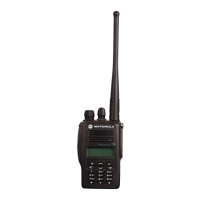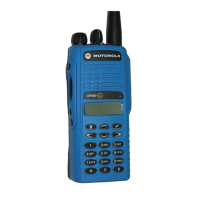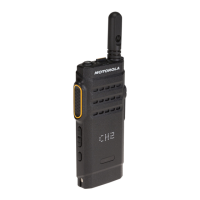3-2 Safe Handling of CMOS and LDMOS
3.3 Safe Handling of CMOS and LDMOS
Complementary metal-oxide semiconductor (CMOS) and lateral diffusion metal oxide semiconductor
(LDMOS) devices are used in this family of radios. Their characteristics make them susceptible to
damage by electrostatic or high voltage charges. Damage can be latent, resulting in failures occurring
weeks or months later. Therefore, special precautions must be taken to prevent device damage
during disassembly, troubleshooting, and repair.
Handling precautions are mandatory for the circuits and are especially important in low humidity
conditions. DO NOT attempt to disassemble the radio without first referring to the CMOS CAUTION
paragraph in the Disassembly and Reassembly section of the basic manual (See Chapter 3).
3.4 General Repair Procedures and Techniques
1. Parts Replacement and Substitution
When damaged parts are replaced, identical parts should be used. If the identical replacement
component is not locally available, check the parts list for the proper Motorola part number and
order the component from the nearest Motorola Communications parts center listed in the “Piece
Parts” section of this manual (See Chapter 1).
2. Rigid Circuit Boards
The family of radios uses bonded, multi-layer, printed circuit boards. Since the inner layers are
not accessible, some special considerations are required when soldering and unsoldering com-
ponents. The printed-through holes may interconnect multiple layers of the printed circuit. There-
fore, care should be exercised to avoid pulling the plated circuit out of the hole.
3. When soldering near the 20-pin and 40-pin connectors:
• avoid accidentally getting solder in the connector.
• be careful not to form solder bridges between the connector pins
• closely examine your work for shorts due to solder bridges.
4. Flexible Circuits
The flexible circuits are made from a different material than the rigid boards and different tech-
niques must be used when soldering. Excessive prolonged heat on the flexible circuit can dam-
age the material. Avoid excessive heat and excessive bending.
5. For parts replacement, use the ST-1087 Temperature-Controlled Solder Station with a 600-700
degree tip, and use small diameter solder such as ST-633. The smaller size solder will melt faster
and require less heat to be applied to the circuit.
To replace a component on a flexible circuit:
• grasp the edge of the flexible circuit with seizers (hemostats) near the part to be removed
• pull gently
• apply the tip of the soldering iron to the component connections while pulling with the seizers.
• Do not attempt to puddle out components. Prolonged application of heat may damage the flexi-
ble circuit.
6. Chip Components
Use either the RLN-4062 Hot-Air Repair Station or the Motorola 0180381B45 Repair Station for
chip component replacement. When using the 0180381B45 Repair Station, select the TJ-65 mini-
thermojet hand piece. On either unit, adjust the temperature control to 700 degrees F. (370
degrees C), and adjust the airflow to a minimum setting. Airflow can vary due to component den-
sity.
• To remove a chip component:
•Use a hot-air hand piece and position the nozzle of the hand piece approximately 1/8” (0.3 cm)
above the component to be removed.

